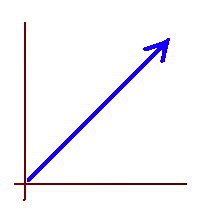A topic that is hard to explain because it is so simple
The substitution method oftentimes works as a powerful technique for solving systems of equations. This method is widely taught in middle and high schools, as part of the Algebra curriculum, along with the other standard methods for solving systems of linear equations in two variables: the elimination method, the graphing method, and the method of determinants (also known as Kramer's rule). Solving systems of equations by substitution is a very interesting process, especially when we consider that the fundamental basis of its concrete execution is not really any algebraic operation at all but a typographical one. Substitution means textual substitution. It is a typographical "find and replace" operation, whereby we combine two strings of characters into a new one, by means of "copy," "cut," and "paste" manipulations. It is a common experience for math teachers noticing many of their students get confused when learning the substitution method. I believe a big part of such confusion in the student's mind comes from the unexpected, unexplained, fundamental difference in nature between algebraic, arithmetic, numerical operations, on one hand, and such a typographical, textual, character-and-string oriented operation like substitution, on the other hand. Most teachers explain the substitution method by doing some examples on the board, and hoping that students will somehow "get it." Indeed, some students do get it. After watching the teacher doing a few examples, something clicks and, that is it, they now know it. They have gotten it. Moreover, usually they not only get it but they love it when they realize how it works. Unfortunately though, these students I refer to in the last few sentences, typically make up only between ten and twenty percent of the class. They are the intellectual high achievers of the class, many of whom will go on to careers in science, engineering, medicine, or money management. The other eighty to ninety percent of the class typically did not get it. They are confused, they do not know what is going on, they have no clue what the teacher did or is talking about. For them this is no happy experience. Actually, it can be really aggravating if the teacher is particularly enthusiastic about substitution but lacks the ability to infect the whole class with his or her enthusiasm. There are some particular examples of systems of equations that, when solved by substitution, seem to yield a spectacularly elegant and short solution. When students have not yet understood the substitution method, watching one of these spectacular solutions makes them feel like the teacher is practicing some mysterious magic trick in front of them. This only adds to their discomfort, and their distaste for math in general, since it is only natural to fear and/or reject what we do not understand. As a math tutor, I have the luxury of working with one student at a time, so I can focus my attention on delivering the particular information my student needs, in the way he or she wants to approach each problem. In the case of substitution, I make sure they understand how to do it, by doing the first example myself so slowly, so carefully, so explicitly, so spelled out, so mechanically, that I make my students feel for sure they can do it faster than me. When I explain solving by substitution I do not try to look smart. Instead, I become a machine, and I consciously take all the magic away from the process, so my student can clearly see how simple it is. The delivery here needs to be accurately tailored to each individual student. It is much harder to do this in front of a whole class, because teachers have to maintain their authority; and making the explanation so explicit that the last student in the class understands it, would probably lower the teachers' own status in the eyes of several other students. In part, substitution is difficult to teach and understand because it is so simple. Compounding the problem, we have to remember all the accumulated deficiencies students are still struggling with, and dragging behind since their first years in elementary school. When solving a system of equations by substitution, the actual substitution is only one step in the process. Even when it is done correctly, students still need to work their way through all the algebraic and arithmetic operations needed to solve the given problem. They very well may do the substitution correctly, only to mess up the problem two steps down the road because they do not know how to add/subtract negative numbers, or they do not know how to divide fractions, or they are still adding with their fingers.




